Mind The Gap!
The Gap Trap Leaders Fall Into
Leaders are often caught in ‘gap management’. They fill the gap between what makes for a good job and what they think their team can deliver. This might mean filling in for less skilled team members, or getting involved in areas where they continue to be expert. It often means they haven’t let go.
Leaders need instead to consider what good and great looks like, how to enable a closing of the ‘gap’ via team enablement, and how to transform the value of the whole effort to achieve greater success.
Leaders’ normal perspective on their role is to deliver a good job. To do this, they have a team who deliver towards this, up to a certain %. The remaining % is the job of the management to fill.
Filling the gap might mean covering some tasks on behalf of less skilled or overworked team members, or genuinely performing management roles such as setting and driving priorities, and quick resolution of issues.
This all sounds fine. Or does it?
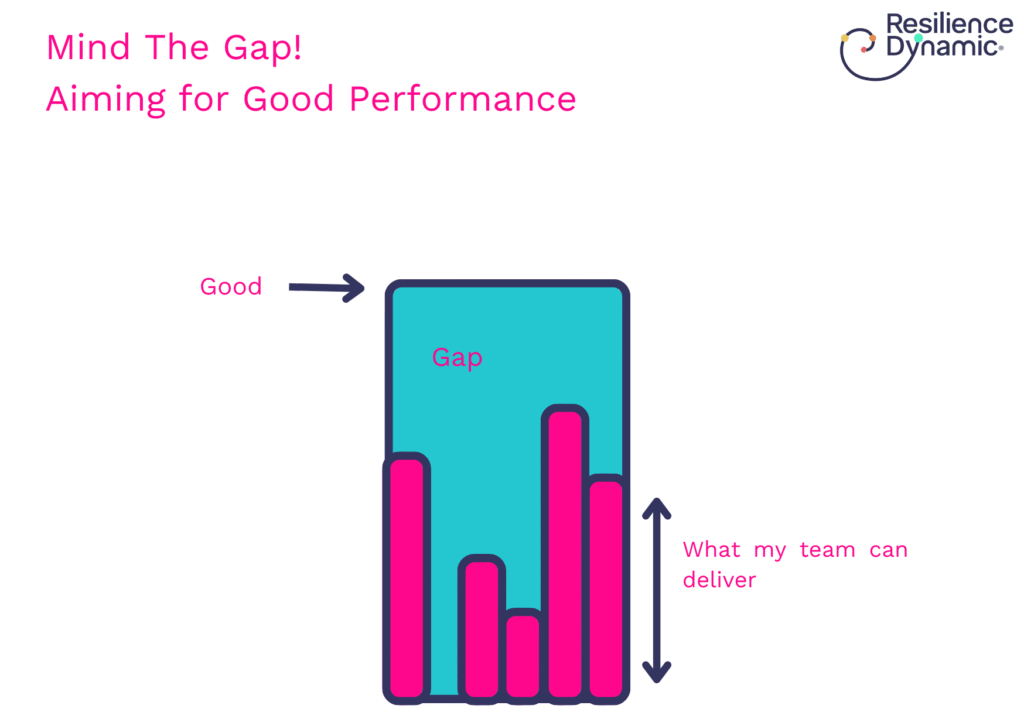
Leaders can be stuck in ‘gap management’ rather than truly setting vision and leading their team. There are several situations where this arises, but we shall explore two types that we consider to be most common.
Situation 1: The Doer
This Leader – The Doer – and his management team are overworked trying to fill the gap.
Maybe there is a genuine resource shortage. But most often we see The Doer hasn’t let go of their expertise and their drive to deliver on the task. They are doers. They act. They take decisions. They like speed. They like direct feedback. They like feeling like they are busy. Busy contributing.
The decisions they take are often ones that team members are capable of taking. In not enabling or delegating, the Doer inadvertently pushes down the value that the team can offer. They widen the gap.
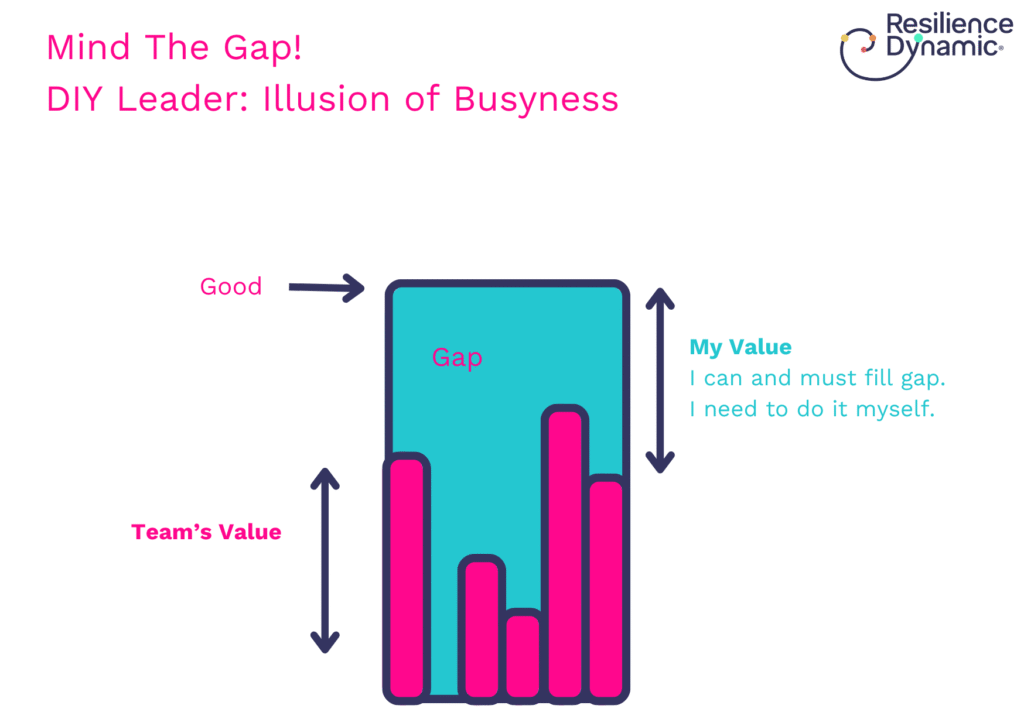
Overall the Doer has not understood that they need to step much more clearly into a Leadership position.
The Doers are caught in a loop of not having enough time to think. Leading means thinking, and this can make a Doer uneasy. So the Doer ignores the uneasy feeling and does what is obviously required – to fill the gap.
Fundamentally what is missed here is the clarity of what the value of the team already is and what it could be with the Leader’s support and challenge. What does it mean to do a great job?
Situation 2: The Options Leader
The Options Leader doesn’t know exactly what good or great means in terms of success criteria for the job.
This means that they put time and effort into areas that don’t always return great value. If they do return great value the Options Leader is not necessarily aware of it, and insists on continuing other paths to fill the apparent gap. They can undo success already achieved! The bottom line result is inconsistent performance, along with team frustration and sometimes exhaustion.
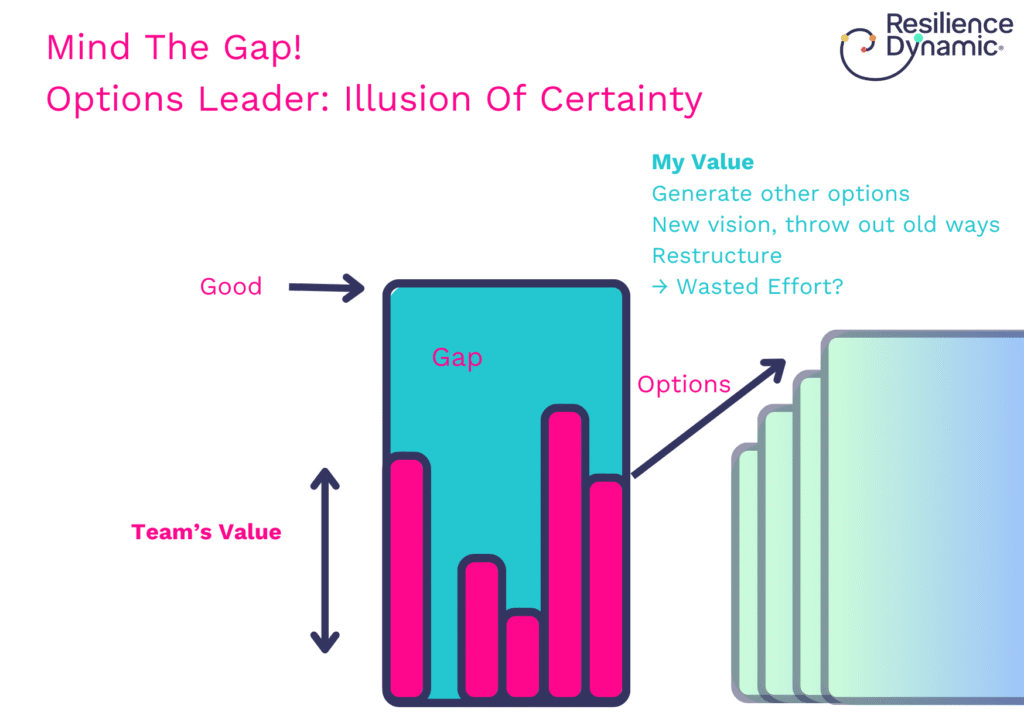
The Options Leader is sometimes hard to spot.
They are often the ones that appear to be very sure that the projects and initiatives they have in place are excellent and will make a real difference. They are active, their teams are busy, they have good ideas and are pursuing them with great intensity. The energy associated means that they can be hard to stop; it can be a bit like an avalanche effect.
The Options Leader also needs to stop and think.
They need to get their drivers of success very clearly stated and very simply measured. Not lots of projects, but a few key performance measures. They need to focus on the criteria for success.
Stopping all extraneous activities and getting down to the nub of the job can be boring for the Options Leader. To do so they must redefine what success looks like for themselves, and be confident that they are indeed achieving more by doing less.
Getting Unstuck
The key to getting out of ‘gap management’ is firstly to understand what is driving the current situation.
Having then done so, the next stage is to figure out how to close the gap via the team and not via the Leader. This stage is also about managing the risk of dipped performance whilst the team learns how to perform at a higher and consistent level.
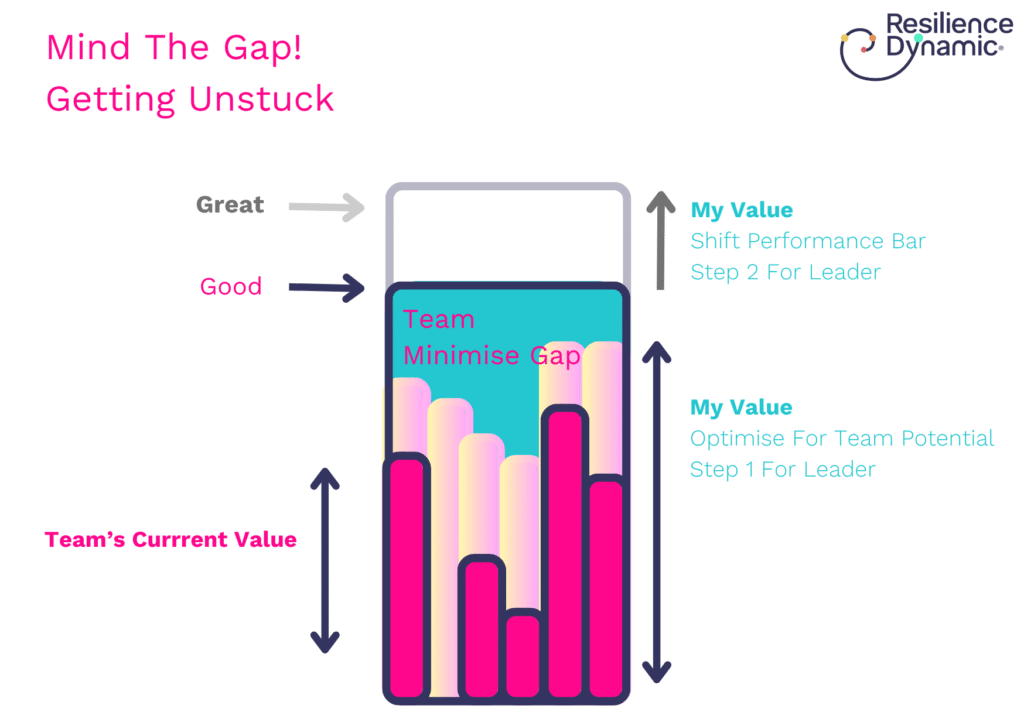
For each of the Doer and the Options Leader, instead of putting effort into understanding the detail of the issues their business unit faces, they have to turn 180° and concentrate on their people.
Understanding and maximising the potential of a team is a complex and never ending business:
- Individual and Team potential drivers have to be understood,
- Barriers have to be broken,
- Trust and risk taking have to be encouraged.
The fundamentals of leadership here are profound:
- Build Relationships
- Inspire Trust and Confidence
- Visioning
- Systems and Processes to support
- Key Measures of Success in place and activated.
Doubts Creep In
As the gap begins to decrease, Leaders can begin to feel exposed.
They can suffer from the feeling of not being needed – it is true they are not needed in the same way any more – and the extra thinking time means they can stray into feelings of insecurity about their own career and position.
The answer to this is again to consider their own vision and what makes for a really successful job; what would great look like. In doing so a new gap is created, again that needs to be filled by the Leader. And again they can perform the same trick – get the team to move their performance up again, so the gap is filled.
In this way, any job, whether in a stable or fast changing marketplace, can be extended and enriched to deliver much higher, much greater, value.
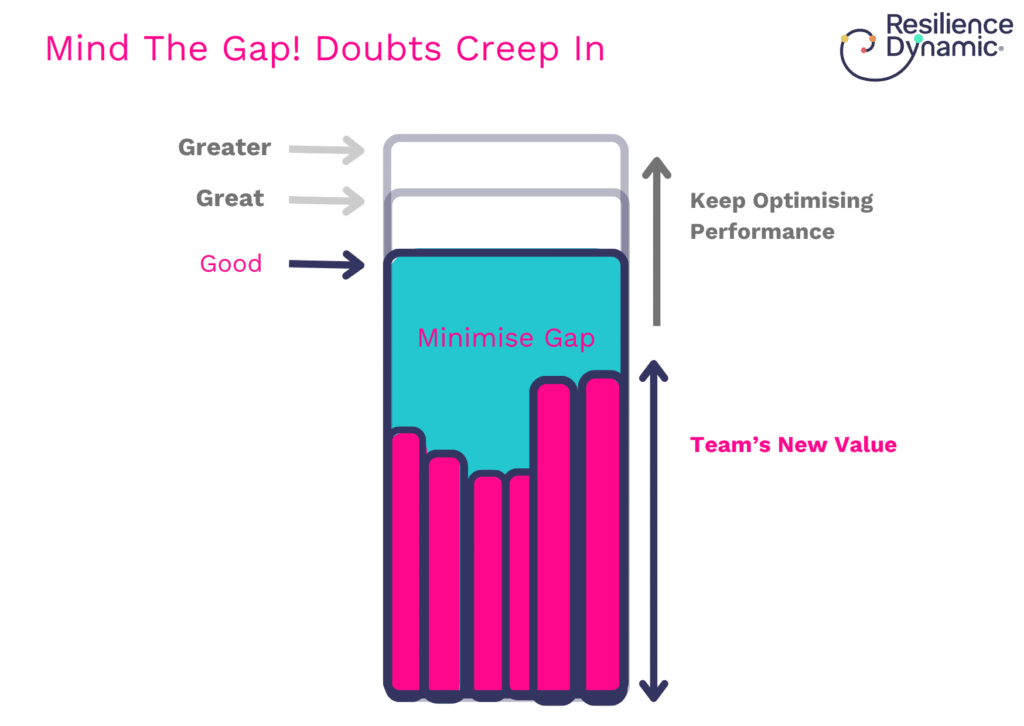
And Then?
This continuous improvement is worthwhile pushing and pushing for where the returns continue to be significant. Customer service and customer satisfaction are areas where there is always another step that can be taken.
There are other contexts where pushing and pushing will start to deliver diminishing returns. Maybe the Leader gets jaded, maybe the next new great goal is too similar to the last. This is a dangerous stage for any Leader – they can no longer see the wood for the trees.
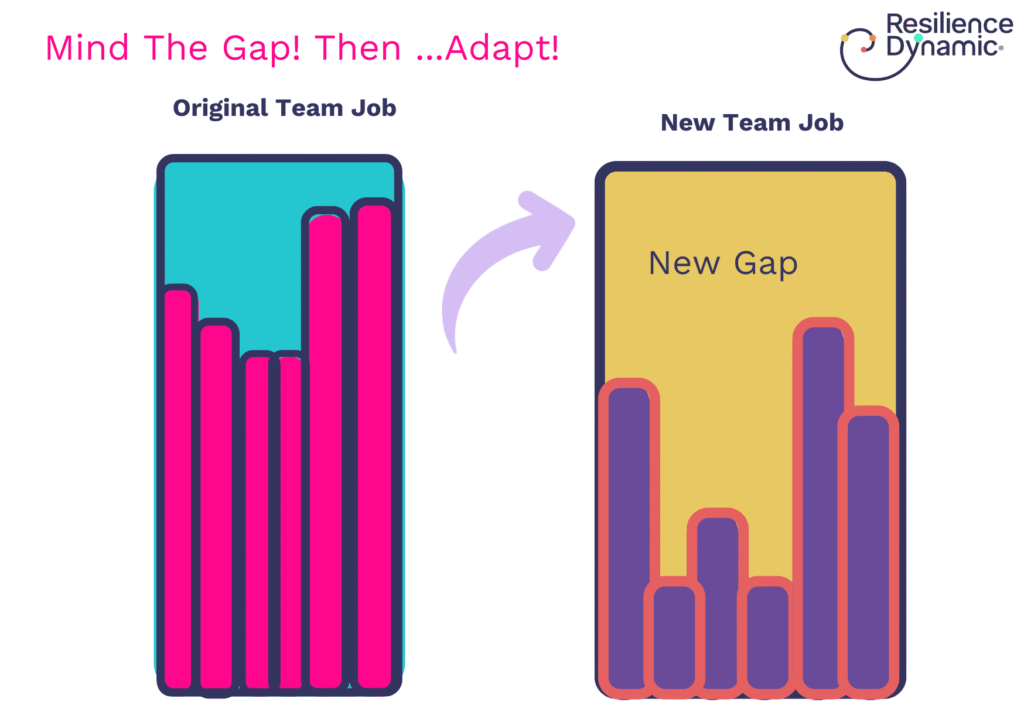
If this is the case it’s time to say ‘job well done’ and to consider what other possibilities might be out there that are more stretching. And so Leaders move into bigger roles. And so they start the gap management cycle again in another context.
This time however they are much wiser about the gap management cycle, and so the push to success – and to their own careers and personal satisfaction – is easier, more fulfilling and faster.
If this article has resonated with you and you are interested in working with the Resilience Dynamic, please don’t hesitate to get in touch via [email protected].
If you would like to explore more about The Resilience Dynamic, do have a look at the following resources:

Author: Jenny Campbell Founder and CEO of the Resilience Dynamic
Follow Jenny on LinkedIn for more of her thoughts, resilience research, and ideas.
Gain exclusive access to Resilience Dynamic in-depth insights
Extend your knowledge, expand your thinking into Healthy, High Performance.
Register today and get your free login to:
- Gain exclusive access to in-depth resilience insights.
- Download and share the insights with your friends and colleagues.
- Receive resilience in-depth insights and tools straight to your inbox, every month.
If you are already receiving our resilience tools via email but it's the first time seeing this exclusive access, do register. You'll get the new exclusive insights, plus be able to download all articles. Simply complete this registration form once to get your login details.
Read our privacy policy
